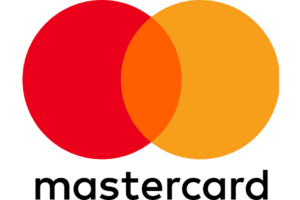Mastercard, Inc. (MA) Stock Analysis

Mastercard Incorporated (MA) Stock Analysis
Market Capitalization: $478.52 Billion
Shares Outstanding: 917.83 Million
Sector: Financial Services
Industry: Payment Processing
Analysis as of: January 4, 2025
1. Company Overview
Mastercard Incorporated (NYSE: MA) is a global leader in payment processing and technology solutions. Founded in 1966, Mastercard operates in over 210 countries and territories, facilitating electronic payments between consumers, financial institutions, merchants, governments, and businesses. The company’s extensive network and innovative payment technologies make it a cornerstone of the global financial ecosystem.
Key Business Segments:
- Payment Processing:
- Consumer Transactions: Facilitates credit, debit, and prepaid card transactions, providing secure and efficient payment solutions for consumers worldwide.
- Commercial Transactions: Offers payment solutions tailored for businesses, including expense management and procurement services.
- Digital Payments and Solutions:
- Contactless Payments: Develops and promotes contactless payment technologies, enhancing transaction speed and convenience.
- Mobile Payments: Invests in mobile payment platforms and partnerships to drive adoption of digital wallets and mobile transactions.
- Data and Analytics:
- Fraud Prevention: Utilizes advanced data analytics and machine learning to detect and prevent fraudulent activities in real-time.
- Consumer Insights: Provides valuable data insights to merchants and financial institutions to optimize marketing strategies and customer experiences.
- Innovative Technologies:
- Blockchain and Cryptocurrency: Explores blockchain technologies and cryptocurrency integrations to enhance payment security and transparency.
- Artificial Intelligence (AI): Implements AI-driven solutions to improve transaction efficiency, customer service, and operational effectiveness.
Strategic Initiatives:
- Global Expansion: Continues to expand its presence in emerging markets, leveraging partnerships and local expertise to capture new growth opportunities.
- Sustainability and ESG Integration: Committed to environmental sustainability, Mastercard integrates Environmental, Social, and Governance (ESG) principles into its business operations and investment strategies.
- Innovation and R&D: Invests heavily in research and development to pioneer new payment technologies, enhance security measures, and improve user experiences.
- Partnerships and Collaborations: Forms strategic alliances with financial institutions, technology companies, and merchants to broaden its service offerings and drive market penetration.
a. Revenue and Growth
TTM Revenue (as of Sep 30, 2024): $27.23 Billion
YoY Revenue Growth (TTM): +11.73%
Analysis:
- Strong Revenue Growth: Mastercard has demonstrated robust revenue growth with a TTM increase of +11.73%. This consistent growth highlights the company’s ability to expand its market share and adapt to evolving payment technologies.
- Historical Growth Momentum: The company showcased impressive YoY revenue growth rates, particularly in FY 2021 (+23.42%) and FY 2022 (+17.76%), driven by increased transaction volumes and expansion into new markets.
- Resilience in Challenging Markets: Despite a decline in revenue growth in FY 2020 (-9.37%) due to global economic disruptions, Mastercard rebounded strongly in subsequent years, underscoring its resilience and strategic adaptability.
- Revenue Sustainability: Mastercard’s diversified revenue streams across consumer, commercial, and digital payments, coupled with continuous innovation, support sustainable long-term growth.
b. Profitability
Net Income (TTM): $12.32 Billion
EPS (TTM): $13.23
Profit Margin: 45.26%
Return on Equity (ROE): 177.58%
Return on Assets (ROA): 22.89%
Return on Capital (ROIC): 41.61%
Analysis:
- Exceptional Profitability: Mastercard reported a net income of $12.32 billion with a substantial profit margin of 45.26%, indicating highly efficient operations and strong revenue conversion.
- High Earnings Per Share (EPS): An EPS of $13.23 reflects significant profitability on a per-share basis, enhancing shareholder value and showcasing the company’s ability to generate substantial earnings.
- Outstanding Return Metrics: ROE of 177.58%, ROA of 22.89%, and ROIC of 41.61% demonstrate Mastercard’s exceptional efficiency in utilizing shareholder equity, assets, and invested capital to generate returns, signaling strong managerial performance and operational excellence.
c. Margins
Gross Margin (TTM): 100.00%
Operating Margin (TTM): 58.45%
Profit Margin (TTM): 45.26%
Analysis:
- Perfect Gross Margin: A gross margin of 100.00% suggests that Mastercard’s cost of revenue is negligible, likely due to the nature of its business model where transaction processing costs are minimal compared to revenue.
- High Operating Margin: Operating margin of 58.45% reflects the company’s ability to control operating expenses effectively, translating a significant portion of revenue into operating income.
- Strong Profit Margin: A profit margin of 45.26% underscores Mastercard’s exceptional ability to convert revenue into net profits, driven by high-margin services and efficient cost management.
d. Cash Flow
Operating Cash Flow (TTM): $14.08 Billion
Capital Expenditures (CapEx) (TTM): -$456.00 Million
Free Cash Flow (FCF) (TTM): $13.62 Billion
FCF Per Share: $14.84
Analysis:
- Robust Operating Cash Flow: Operating cash flow of $14.08 billion highlights Mastercard’s strong ability to generate cash from its core business operations, essential for funding growth initiatives and shareholder returns.
- Healthy Free Cash Flow: With a free cash flow of $13.62 billion, Mastercard demonstrates substantial cash generation after accounting for capital expenditures, providing flexibility for strategic investments, debt reduction, and dividend payments.
- Positive Cash Flow Dynamics: The strong free cash flow supports the company’s ability to sustain operations, invest in innovation, and reward shareholders through dividends and buybacks without relying heavily on external financing.
3. Balance Sheet
Total Assets: $47.24 Billion
Total Liabilities: $39.74 Billion
Shareholders’ Equity: $7.50 Billion
Total Debt: $18.36 Billion
Cash & Cash Equivalents: $11.40 Billion
Net Cash Position: -$6.77 Billion
Debt-to-Equity Ratio: 2.45
Current Ratio: 1.29
Quick Ratio: 0.89
Working Capital: $5.01 Billion
Analysis:
- Slight Negative Net Cash Position: With a net cash position of -$6.77 billion, Mastercard holds more debt than cash. However, given the company’s robust cash flow and profitability, this position is manageable.
- High Financial Leverage: A debt-to-equity ratio of 2.45 indicates significant reliance on debt financing. While this increases financial risk, Mastercard’s strong earnings and cash flow mitigate potential concerns.
- Adequate Liquidity: A current ratio of 1.29 and working capital of $5.01 billion suggest that Mastercard has sufficient liquidity to meet its short-term obligations, reducing the risk of liquidity issues.
- Low Quick Ratio: A quick ratio of 0.89 indicates that Mastercard may rely on inventory or other less liquid assets to cover its immediate liabilities, although this is less of a concern given the company’s high liquidity and cash flow.
- Asset Quality: With total assets of $47.24 billion and total liabilities of $39.74 billion, Mastercard maintains a solid asset base, although a substantial portion is financed through debt.
4. Valuation
Current Stock Price (Jan 3, 2025): $522.40
PE Ratio (TTM): 39.41
Forward PE: 33.26
Price-to-Sales (PS) Ratio: 17.80
Forward PS: 15.19
Price-to-Book (PB) Ratio: 64.47
Price-to-Free Cash Flow (P/FCF) Ratio: 35.13
Price-to-Operating Cash Flow (P/OCF) Ratio: 34.00
EV/EBITDA: 28.91
EV/Sales: 17.82
PEG Ratio: 2.35
Analysis:
- High PE Ratios: A trailing PE ratio of 39.41 and a forward PE of 33.26 indicate that Mastercard is trading at a premium relative to its earnings. While this reflects strong investor confidence and growth expectations, it may also suggest overvaluation compared to industry peers.
- Elevated Price-to-Sales (PS) Ratio: A PS ratio of 17.80 and forward PS of 15.19 signify that Mastercard is valued significantly higher relative to its revenue generation. This premium valuation may be justified by the company’s strong market position and growth prospects but warrants careful consideration.
- High Price-to-Book (PB) Ratio: A PB ratio of 64.47 indicates that the stock is trading well above its book value, which is typical for high-growth companies with substantial intangible assets and strong brand value.
- Elevated Price-to-Cash Flow Ratios: P/FCF of 35.13 and P/OCF of 34.00 suggest that the stock is trading at a premium relative to its free and operating cash flows, indicating solid cash flow generation but also higher valuation.
- Competitive Enterprise Value Ratios: An EV/EBITDA of 28.91 and EV/Sales of 17.82 indicate that Mastercard is valued at a premium relative to its earnings and revenue, aligning with its high-growth profile in the competitive financial services sector.
- High PEG Ratio: A PEG ratio of 2.35 suggests that Mastercard may be overvalued relative to its growth prospects. Investors should weigh the high valuation against the company’s growth potential and market position.
5. Market Performance
52-Week Range: $416.53 – $537.70
52-Week Price Change: +23.58%
Beta (5Y): 1.10
Relative Strength Index (RSI): 45.13
Average Volume (20 Days): 1,237,466
Short Selling Information:
- Short Interest: 5.54 Million
- Short Previous Month: 5.95 Million
- Short % of Shares Out: 0.60%
- Short % of Float: 0.61%
- Short Ratio (days to cover): 2.23
Analysis:
- Moderate Price Appreciation: Mastercard’s stock has appreciated by +23.58% over the past 52 weeks, trading within a range of $416.53 to $537.70. This increase reflects investor confidence and positive market sentiment, driven by strong financial performance and strategic initiatives.
- Moderate Volatility: A beta of 1.10 indicates that Mastercard’s stock has volatility slightly higher than the broader market, subjecting it to price fluctuations in response to market movements and company-specific news.
- Neutral RSI: An RSI of 45.13 suggests that the stock is neither overbought nor oversold, indicating balanced buying and selling pressure without immediate signs of a price reversal.
- Low Short Interest: With a short interest of 5.54 million shares (0.60% of shares outstanding and 0.61% of float), there is minimal bearish sentiment among investors. A short ratio of 2.23 days to cover indicates limited short-term bearish pressure, reducing the likelihood of a short squeeze.
- Average Trading Volume: An average volume of approximately 1,237,466 over the past 20 days signifies moderate liquidity, facilitating ease of trading for investors.
6. Financial Health and Risks
a. Liquidity
Current Ratio: 1.29
Quick Ratio: 0.89
Working Capital: $5.01 Billion
Analysis:
- Adequate Liquidity: A current ratio of 1.29 and working capital of $5.01 billion indicate that Mastercard has sufficient liquidity to meet its short-term obligations, reducing the risk of liquidity issues.
- Low Quick Ratio: A quick ratio of 0.89 suggests that Mastercard may rely on inventory or other less liquid assets to cover its immediate liabilities. However, given the company’s strong operating cash flow, this is less of a concern.
b. Leverage
Total Debt: $18.36 Billion
Debt-to-Equity Ratio: 2.45
Debt-to-EBITDA Ratio: 1.09
Debt-to-FCF Ratio: 1.35
Interest Coverage Ratio: 26.09
Analysis:
- High Financial Leverage: A debt-to-equity ratio of 2.45 indicates significant reliance on debt financing, increasing financial risk. However, Mastercard’s strong earnings and cash flow mitigate potential concerns related to high leverage.
- Comfortable Debt Ratios: A debt-to-EBITDA ratio of 1.09 and a debt-to-FCF ratio of 1.35 suggest that Mastercard has a comfortable ability to service its debt from earnings and free cash flow, reducing financial risk.
- Strong Interest Coverage: An interest coverage ratio of 26.09 indicates that Mastercard can easily cover its interest expenses from its earnings, showcasing financial stability and the ability to manage debt obligations effectively.
c. Profitability & Cash Flow
- Exceptional Profitability: With a net income of $12.32 billion and a profit margin of 45.26%, Mastercard showcases its ability to generate substantial profits from its operations, supported by high-margin services and efficient cost management.
- Robust Cash Flow Generation: Operating cash flow of $14.08 billion and free cash flow of $13.62 billion indicate that Mastercard effectively manages its cash flows, allowing for reinvestment in growth initiatives, debt reduction, and shareholder returns through dividends and buybacks.
- Impressive Return Metrics: ROE of 177.58%, ROA of 22.89%, and ROIC of 41.61% demonstrate Mastercard’s efficient utilization of shareholder equity, assets, and invested capital to generate returns, signaling strong managerial performance and operational excellence.
d. Operational Risks
- Market Competition: The payment processing and financial technology sectors are highly competitive, with numerous established players and new entrants. Maintaining market share requires continuous innovation, effective marketing, and strategic partnerships.
- Regulatory Compliance: Mastercard operates in multiple jurisdictions, navigating complex regulatory environments, including data privacy laws, anti-money laundering regulations, and financial compliance standards. Non-compliance can result in fines, operational restrictions, and reputational damage.
- Technological Advancements: Rapid advancements in payment technologies necessitate continuous investment in research and development to stay ahead of competitors and meet evolving consumer demands. Failure to innovate can lead to product obsolescence and loss of market share.
- Economic Sensitivity: Mastercard’s performance is sensitive to macroeconomic conditions, including consumer spending, economic growth, and interest rate fluctuations, which can influence transaction volumes and overall financial performance.
e. Market & Regulatory Risks
- Interest Rate Changes: Fluctuations in interest rates can impact Mastercard’s borrowing costs and consumer spending behavior, potentially affecting transaction volumes and profitability.
- Regulatory Changes: Changes in international trade policies, taxation, and industry-specific regulations can impact Mastercard’s operations, cost structures, and strategic initiatives.
- Cybersecurity Threats: As a payment processor, Mastercard is a prime target for cyberattacks. Ensuring robust cybersecurity measures is critical to protect sensitive financial data and maintain customer trust.
- Geopolitical Risks: Mastercard’s global operations expose it to geopolitical risks, including trade tensions, political instability, and changes in government policies, which can disrupt business operations and impact revenue streams.
7. Conclusion
Pros:
- Robust Revenue Growth: Mastercard has demonstrated consistent revenue growth with a TTM increase of +11.73%, supported by strong performance in key business segments and strategic expansions.
- Exceptional Profitability: The company boasts a net income of $12.32 billion and a high profit margin of 45.26%, reflecting effective cost management and strong revenue conversion.
- Impressive Return Metrics: ROE of 177.58%, ROA of 22.89%, and ROIC of 41.61% highlight Mastercard’s exceptional efficiency in utilizing shareholder equity, assets, and invested capital to generate returns.
- Strong Cash Flow Generation: Operating cash flow of $14.08 billion and free cash flow of $13.62 billion indicate Mastercard’s ability to fund growth initiatives, reduce debt, and reward shareholders through dividends and buybacks.
- Comfortable Debt Levels: Debt-to-EBITDA ratio of 1.09 and debt-to-FCF ratio of 1.35 suggest that Mastercard has a comfortable ability to service its debt obligations from earnings and free cash flow.
- Consistent Dividend Payments: Mastercard pays an annual dividend of $3.04 (0.58%), providing income to shareholders with a strong dividend growth rate of +15.61% YoY.
- High Interest Coverage: An interest coverage ratio of 26.09 demonstrates Mastercard’s ability to easily cover its interest expenses, ensuring financial stability and reducing default risk.
Cons:
- High Valuation Ratios: With a trailing PE ratio of 39.41 and forward PE of 33.26, Mastercard is trading at a premium relative to its earnings. This high valuation may limit upside potential and pose valuation risks if growth expectations are not met.
- Negative Net Cash Position: A net cash position of -$6.77 billion indicates that Mastercard holds more debt than cash, increasing financial risk and limiting financial flexibility.
- High Debt-to-Equity Ratio: A debt-to-equity ratio of 2.45 signifies significant reliance on debt financing, which can amplify financial risk, especially in adverse economic conditions.
- Moderate Short Interest: While short interest is low, any sudden increase could indicate growing bearish sentiment among investors.
- Potential Regulatory Risks: Operating in multiple jurisdictions exposes Mastercard to complex regulatory environments, increasing the risk of compliance-related issues.
- Dependency on Transaction Volumes: Mastercard’s revenue is highly dependent on transaction volumes, which can be influenced by economic cycles, consumer spending behavior, and competition.
Pros:
- Consistent and strong revenue growth across key business segments.
- Exceptional profitability with high net income and profit margins.
- Impressive return metrics (ROE, ROA, ROIC) indicating efficient capital utilization.
- Robust operating and free cash flow supporting strategic initiatives and shareholder returns.
- Comfortable debt ratios and high interest coverage ratio enhancing financial stability.
- Consistent dividend payments with a strong dividend growth rate.
- Strong market position and brand reputation in the global payment processing industry.
Cons:
- High valuation ratios may limit upside potential and pose valuation risks.
- Negative net cash position increases financial risk and limits financial flexibility.
- High debt-to-equity ratio signifies significant reliance on debt financing.
- Exposure to regulatory compliance and cybersecurity risks.
- Dependency on transaction volumes, which can be influenced by macroeconomic factors.
Final Note
Mastercard Incorporated operates within the highly competitive and dynamic payment processing sector, leveraging its strong brand reputation, innovative technologies, and global network to drive growth and profitability. The company’s robust financial performance, exceptional return metrics, and strong cash flow position position it well for continued success. However, investors must remain aware of high valuation ratios, negative net cash position, financial leverage, and operational risks that could impact the company’s performance.
Disclaimer:
This analysis is for informational purposes only and does not constitute investment advice. Investing involves risks, including potential loss of principal. Past performance is not indicative of future results. Consult a qualified financial advisor before making any investment decisions.






